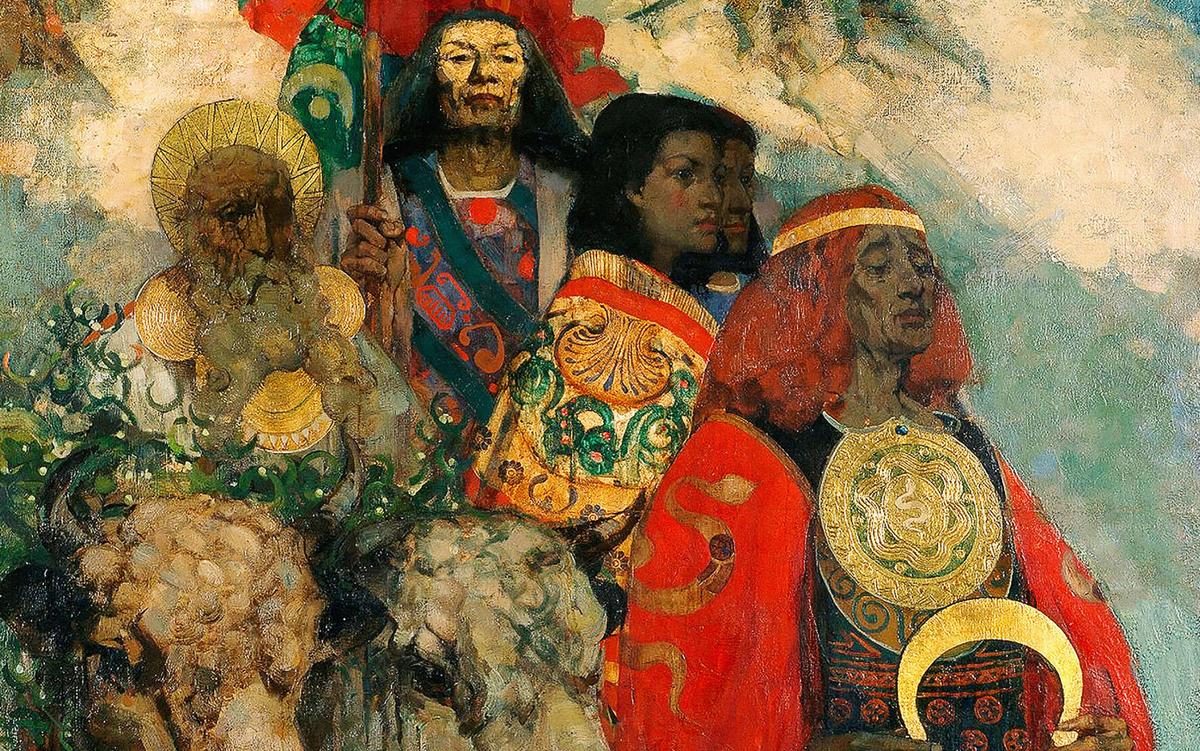- cross-posted to:
- mythology
- cross-posted to:
- mythology
More than 30 Greek and Roman writers from around 200 BCE to the 4th century CE were fascinated by this enigmatic group of ritualists. There has been a lot of controversy concerning the veracity of these ancient authors and their plagiarism or recycling of ‘facts’ about the Druids. However, I do have faith in one: Julius Caesar. He was in Gaul for nearly 10 years in the 50s BCE, leading the war of Roman conquest and so he knew the region personally rather than relying on secondhand information. And, because he was writing his chronicle for scrutiny by the Senate in Rome, it is doubtful whether he would have got away with fanciful imaginings because they could have been contradicted by his fellow officers.
Caesar seems to have had quite intimate knowledge of Druidism, gained – at least in part – from his close friendship with a Druid named Diviciacus, who was also the ruler of a prominent Gallic tribe in eastern Gaul, the Aedui, an ally of Rome. We know of Diviciacus from another contemporary source, a comment by the orator Cicero who had met Diviciacus in Rome, and spoke warmly of the Gallic Druid as particularly skilled in the art of divination. So, while many ancient authors painted negative pictures of the Druids, condemning them as blood-soaked savages lurking in sinister forests, Caesar respected them for their erudition as natural scientists, teachers, healers and their specialism in liaising with the denizens of the otherworld. It is this last skill that appears to have left intriguing archaeological traces, including the rite of human sacrifice.
The sophistication of the murder suggests it was to keep the victim hovering between life and death for some time
In August 1984, industrial peat-cutting operations at Lindow Moss in Cheshire, in northwest England, revealed a horrific object: part of a human body. The police were called in to investigate a possible murder, and the body parts were soon identified as belonging to a young man. However, this man hadn’t died recently but about 2,000 years ago, at the time when Britain was in the process of becoming a Roman province. Lindow Man, as he is known, was the victim of a viciously violent and repeated assault that ended in his death and interment in a boggy pool sometime in the mid-1st century CE. His immersion in the swamp preserved not only his skeleton but his skin, hair and internal organs – a wonderful resource for archaeologists. He was fit, in his mid-20s, and we think he was a person of high status for his fingernails were in mint condition and his facial hair was neatly trimmed using a razor (an expensive piece of grooming equipment).
The reason for this man’s significance in the context of the Druids lies in the contents of his gut. There is a description of ancient Druidic rituals in Gaul by the Roman author Pliny the Elder (writing in the mid-late 1st century CE) in his massive Natural History, a multi-volume work describing natural curiosities throughout the known world. On the sixth day after the new moon, the Druids would gather beneath a sacred oak. One of them would climb the tree to cut down mistletoe from its branches, using a gilded sickle. According to Pliny’s testimony, the Druids regarded mistletoe as having the spiritual power both to heal and to promote fertility in crops and livestock. In the final hours before his brutal death, Lindow Man had consumed a special meal – a kind of ‘last supper’ – that contained a peculiar mixture of seeds, wild plants, cereal grains and mistletoe pollen in sufficient quantities for it to have been deliberately included in the griddled loaf that the luckless victim had consumed just before his brutal death.
The complex manner of his killing strongly suggests human sacrifice. He was stunned by a violent blow to the head, garrotted, and his throat cut. Then, while still breathing (there was bog water found in his lungs), he was thrust facedown into the marsh: a highly orchestrated ritual killing. And the presence of the mistletoe might, just might, tie his death to Druidic sacrificial action. The sophistication of the murder suggests that it was conducted with care and with the intention to keep the victim hovering between life and death for some time. (Bogs themselves are liminal and contradictory places, neither fully dry nor wet.) And, even after his death, the body of Lindow Man was suspended between states of being, since its preservation did not allow his remains to decay and thus, perhaps, denied his spirit to join the ancestors.
more to read on the site :)

